Price reductions at Crocus
by Sarah - July 23rd, 2010.Filed under: Crocus, Price Reductions.
Crocus reduced loads of prices today
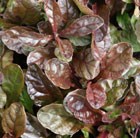
bugle was £5.99 now £3.99
Position: full sun or partial shadeSoil: any moist, well-drained soilRate of growth: fast-growingFlowering period: April to JuneHardiness: fully hardyA useful plant for the edge of a shady border, ajuga also makes good groundcover as it soon knits together to form an evergreen carpet. This one has attractive, bronze-purple foliage, with densely packed, small, upright spires of deep blue flowers in spring. Tolerates sun or shade and poor soils, but does not like to dry out.Garden care: To rejuvenate and minimise congestion, lift and divide clumps in late autumn or early spring every two years.
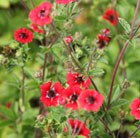
cinquefoil was £5.99 now £3.99
Position: full sunSoil: poor to moderately fertile, well-drained soilRate of growth: averageFlowering period: June to AugustHardiness: fully hardyLong sprays of bright scarlet, saucer-shaped flowers with bright yellow anthers appear all summer long above clumps of pretty, strawberry-like leaves. This low-growing deciduous shrub is a perfect front-of-border plant for a bold planting scheme based on ‘hot’ colours. Given a sunny, well-drained site, it’s easy to grow, producing a succession of flowers from June to August, although it will also brighten up a partially shady spot in the garden. Garden care: Lift and divide large clumps in autumn or spring. Apply a generous 5-7cm (2-3in) mulch of well-rotted compost or manure around the base of the plant in spring.

Sweet Violet was £5.99 now £3.99
Position: full sun or partial shadeSoil: fertile, humus-rich, moist, well-drained soilRate of growth: average to fast-growing Flowering period: February to March Flower colour: violet-blueOther features: sweetly scented cut-flowersHardiness: fully hardySweetly scented, violet-blue flowers from February to March and heart-shaped, bright green leaves. Sweet violets are perfect for naturalising in a shady woodland garden or shrub border in moist, well-drained, humus-rich soil. Much loved by Victorian dandies, the exquisitely scented blooms make delightful cut-flower posies.Garden care: Incorporate lots of well-rotted leaf mould or garden compost when planting. Protect young plants from slug-damage using environmentally friendly slug pellets or beer traps. Deadhead the spent blooms to prolong flowering.
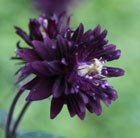
granny’s bonnet was £5.99 now £3.99
Position: full sun or partial shadeSoil: fertile, moist, well-drained soilRate of growth: average to fast-growingFlowering period: May to JuneHardiness: fully hardyA popular cultivar among garden designers, this lovely grannys bonnet has beautiful, fully double, spur-less purple-black flowers in late spring above fern-like green leaves. It looks gorgeous with other black flowers and is equally at home in cottage-garden schemes or among grasses. It thrives best in soil that retains moisture over the summer. It is easy to grow and quite short-lived, but self-seeds freely, though rarely to nuisance level.Garden care: Lift and divide large clumps in early spring and apply a generous 5-7cm (2-3in) mulch of well-rotted manure or garden compost around the plant. Divided specimens may take some time to establish since they dont like having their roots disturbed. Deadhead to prolong flowering. Contact with the sap may cause skin irritation.
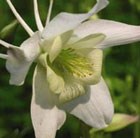
granny’s bonnet was £5.99 now £3.99
Position: full sun or partial shadeSoil: fertile, moist, well-drained soilRate of growth: average to fast-growingFlowering period: May to JuneHardiness: fully hardyAquilegias, or grannys bonnet, are grown for their distinctive, delicate, nodding flowers that vary in shape and size between species. This one has single white flowers in late spring and early summer above attractive mid-green leaves. A great perennial that looks great planted in the middle of a sunny border or to light up a shady part of the garden. A popular and easy-to-grow cottage garden plant, it prefers a soil that retains moisture over the summer.Garden care: Lift and divide large clumps in early spring and apply a generous 5-7cm (2-3in) mulch of well-rotted manure or garden compost around the plant. Divided specimens may take some time to establish since they dont like having their roots disturbed. Deadhead to prolong flowering. Contact with the sap may cause skin irritation

elephant’s ears was £6.49 now £4.49
Position: full sun or partial shadeSoil: any soilRate of growth: average to fastFlowering period: March to AprilHardiness: fully hardyCommonly known as elephant’s ears, because of their large, leathery, oval leaves, bergenias have become fashionable again, thanks both to the number of new cultivars that have become widely available and to their usefulness in the garden. Bergenias are low maintenance, evergreen, will grow in sun or shade and tolerate a wide range of soils, including dry soils and clay. They make lovely edging plants, their huge leaves contrasting with the delicate fronds of ferns (in shade) or the tiny leaves of thymes (in sun). This variety has striking magenta flowers held high on scarlet stems above the foliage in mid spring. A cold snap in winter will turn the leaves from deep green to a rich claret. Garden care: After flowering remove faded flowerheads. Cut off damaged foliage in spring. Lift and divide large clumps in early spring.

pincushion flower was £6.49 now £4.49
Position: full sunSoil: well-drained, neutral to slightly alkaline soilRate of growth: averageFlowering period: June to AugustFlower colour: lavender blueOther features: the flowers are highly attractive to butterflies and bees and make a pretty cut posy.Hardiness: fully hardyCompact form of the popular pincushion flower. Pale blue flowers produced in profusion on wiry stems. Hummocks of grey-green foliage remain tight and tidy making this a useful plant for smaller gardens or containers. Needs a well-drained soil where it will act as a magnet for bees and butterflies. Garden care: Protect young plants from slug damage using environmentally friendly slug pellets or beer traps. Deadhead regularly to prolong flowering and cut back in autumn to maintain tidy habit and form. It is worth keeping in mind that these plants are biennial or short lived perennials.
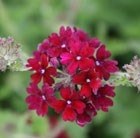
verbena was £6.49 now £4.49
Position: full sunSoil: moist, well-drained soilRate of growth: average Flowering period: June to September Flower colour: claretHardiness: frost hardyDark claret flowers are produced throughout summer and into autumn above feathery, green foliage. A vigorous, ground-hugging perennial for a sunny spot, which looks lovely in a ‘hot’ border. It associates really well with yellow and orange flowering plants, such as Crocosmia ‘George Davison’ and Dahlia ‘Arabian Night’. It also looks lovely planted in pots on a sunny patio.Garden care: Protect plants from the cold weather by applying a dry winter mulch around the crown.
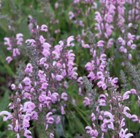
meadow clary was £6.49 now £4.49
Position: full sunSoil: moderately fertile, moist but well-drained soilRate of growth: average Flowering period: May to July Flower colour: pale pinkOther features: useful early flowering formHardiness: fully hardyOne of the earliest of the salvias to flower. Each slender upright stem carries a series of comparatively large, hooded flowers in candyfloss pink, which open in succession up its length, while a large rosette of grey green leaves form a dense groundcover. A fine Salvia that exhibits strong and vigorous growth, and often producing a second flush of flowers later in July and August. The flowers are attractive to bees and butterflies.Garden care: To prolong flowering, cut out spent flower spikes as soon as they start to fade, leaving foliage to mature into rich autumn tones. Alternatively, cut back the whole plant after early flowering in late May/June to enjoy a second flush of blooms in July and August. Apply a generous 5-7cm (2-3in) mulch of well-rotted garden compost or manure around the base of the plant in spring.
border phlox was £6.49 now £4.49
perennial phlox was £6.49 now £4.49
verbena was £6.49 now £4.49
lamb’s ears was £6.49 now £4.49
bergamot (syn. Snow Maiden) was £6.49 now £4.49
beard tongue (syn. Garnet) was £6.49 now £4.49
elephant’s ears (syn. Silverlight) was £6.49 now £4.49
sage was £6.49 now £4.49
feld pink was £6.49 now £4.49
pink was £6.49 now £4.49






